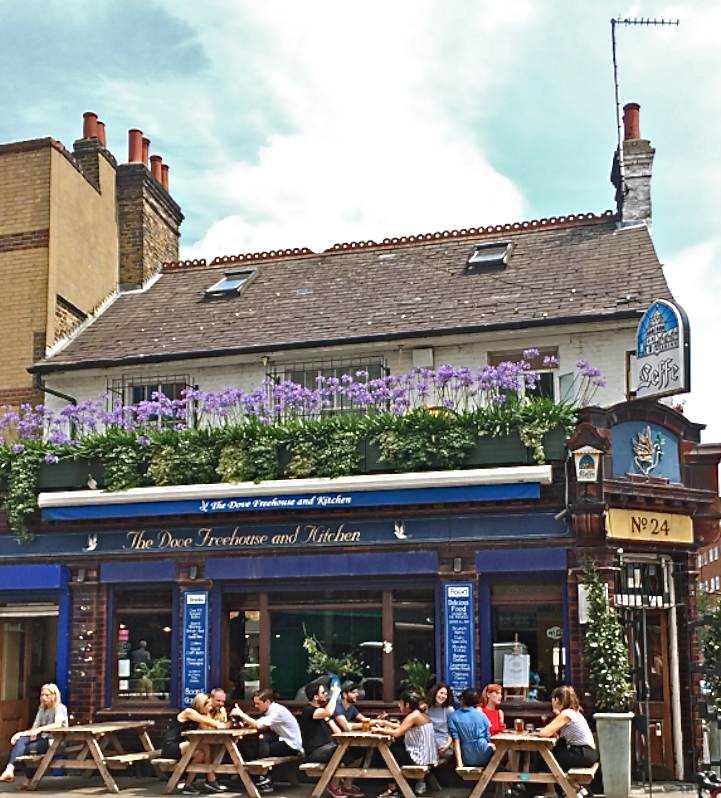Glimpses of Healing and Hope
August 1, 2016
by: Jane Bishop Halteman

Quiet in the city at Clapton Pond
One of Parker J. Palmer’s comments in a Facebook post this last week caught my attention: “In this noisy season of political frenzy, it’s hard to remember ‘the sound of silence.’ But it’s exactly at such times that we need the grounding and wisdom that can come from keeping still for a while.”
This link will take you to Palmer’s post, which includes Pablo Neruda’s poem about silence, And now we will count to twelve…, which Palmer says he reads several times a day “to help me reclaim my right mind and my true heart.”
In spite of the noisiness of our lives, silence can be found in nooks and crannies if we are willing to make time and space to notice. We discovered the pleasant pond in the photo above in London just this side of a very busy street where automobiles, trucks, double-decker buses, police cars, and ambulances zigzagged their way through the congestion—anything but a silent setting, but we managed, for a moment, to secure a measure of quiet in the beauty of that slightly sheltered space named Clapton Pond.
Wherever we went on our two-week family excursion to The Netherlands, Germany, and England, crowds of people and horrendous traffic assaulted our senses as we shared highways and canals, trams, buses, planes and trains (including the Chunnel), railroad stations, airports, and the underground with the locals and many vacationers like ourselves who also were visiting museums, cathedrals, and other historical points of interest, along with eating and shopping. The night sounds of parties and a nearby restaurant continued past our bedtime in Amsterdam. Noises of different varieties broke the silence in Bocholtz, where soft neighborhood voices carried in the rural night air and roosters woke us during pre-dawn hours.
Silence has been called the way into the deep well of inner wisdom. In the words of Thomas Merton, “Silence has many dimensions. It can be a regression and an escape, a loss of self, or it can be presence, awareness, unification, self-discovery. Negative silence blurs and confuses our identity, and we lapse into daydreams or diffuse anxieties. Positive silence pulls us together and makes us realize who we are, who we might be, and the distance between these two.”
Gunilla Norris, in her book Sharing Silence, Meditation Practice and Mindful Living, suggests that “when we make a place for silence, we make room for ourselves. This is simple. And it is radical. A room set apart for silence becomes a sanctuary—a place for breath, for refreshment, for challenge, and for healing.
“Silent spaces invite us to go to the inner room—the room inside ourselves. By making room for silence, we resist the forces of the world which tell us to live an advertised life of surface appearances, instead of a discovered life—a life lived in contact with our senses, our feelings, our deepest thoughts and values,” Norris observes.
Frederic and Mary Ann Brussat have gathered a host of helpful ways to practice silence (and other spiritual disciplines) at their Spirituality and Practice website. They say this about silence: “Our world contrasts sharply with the inner world of silence. We are bombarded daily with the noise of crowded residences, workplaces, and entertainment sites. The clamorous voices of the media are always trying to get our attention. We live amidst the seemingly relentless roar of our machines, our tools, and our toys.
“Very few places today are soundproof. The norm is noisy verging on chaotic. The Tower of Babel still stands in our midst, a grim reminder that our various expressions can divide and even conquer us. When this world feels overwhelming and chaos seems to be getting the best of us, silence is a powerful antidote. This practice increases our capacity for contemplation. It enables us to focus our attention on deep matters of the heart. It is where we can commune with things greater than the cacophony all around us,” the Brussats say.
“How can you find this inner quietude, tranquility, and calm? You must make room for it—literally. Find a space of physical silence where you can sit quietly, away from distracting demands, voices, and sounds. Go there every day. It is the gateway to your interior silence.” Where might you find a place to inhabit the silence in the midst of chaos? Perhaps a space in your own home, your office, a park you pass every day, your back yard?
I have long loved a story from Sue Monk Kidd’s When the Heart Waits about sitting in silence with an injured bird, so you can imagine my delight at finding that passage in video format among the Brussats’ resources on silence. Check out this link to hear the reading and decide for yourself what value you may find as you reach toward the Divine by incorporating silence into our noisy world. Borrowing phrases from Neruda's poem, what will the earth teach us when we allow silence to interrupt the noise in our lives?

This unexpected rooftop garden provided a mini space of silence
in the midst of a Hackney neighborhood crowd in Greater London
